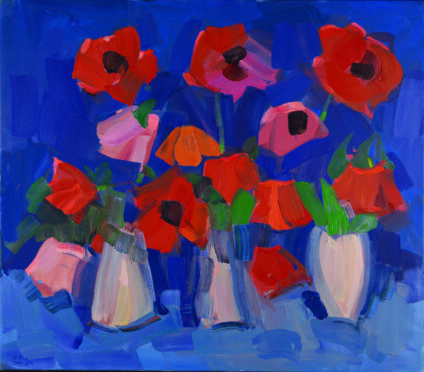
If I could have a superpower, it would be to go back in time and wander around the corridors and studios of the Glasgow School of Art’s now fire-decimated Mackintosh Building, earwigging into conversations and looking over shoulders.
In this elegant Art Nouveau masterpiece, designed between 1896 and 1909 by Charles Rennie Mackintosh, generations of students found their feet as artists and designers.
Talk to any of the artists who learned their craft in “The Mack” and you get a sense of how special an experience it was to study there – and to appreciate how deeply this ruined building remains intact in their collective imaginations.
James Fullarton is one of many celebrated painters who emerged from GSA’s painting department in the 1960s. The Saltcoats-born artist, who has lived in the South Ayrshire village of Straiton for more than 40 years, studied under some of the giants of Scotland’s post-war art scene. His teachers included Alexander Goudie (father of artist and broadcaster Lachlan Goudie), David Donaldson and Duncan Shanks.
Yesterday saw the opening of an exhibition devoted to his life and work in the Maclaurin Gallery in Ayr. Featuring more than 60 paintings, from his years at art school to the present day, it represents a lifetime of looking intently at the world around him.
Fullarton’s land and seascapes sing with light and colour while his still lifes – particularly his trademark poppies – are lush and touchy-feely.
Self-portraits feature heavily in his repertoire.
Fullarton has always painted himself because he never liked the idea of a photographic portrait in a catalogue. What appears to be a steely gaze emerging from a tangle of white curly hair is, in fact, a portrait of an artist quietly looking at himself – and at life beyond his easel.
In January, BBC2 aired Survivors: Portraits Of The Holocaust. This powerful documentary, still available on the iPlayer, featured interviews with seven survivors of Hitler’s death camps. It also showed the seven – now in their 90s – all being painted by a different artist.
The portraits, commissioned by Prince Charles, are a lasting reminder of horrors which will one day be lost to living memory. These powerful portraits have now gone on display at the Palace of Holyroodhouse in Edinburgh.

Enjoy the convenience of having The Sunday Post delivered as a digital ePaper straight to your smartphone, tablet or computer.
Subscribe for only £5.49 a month and enjoy all the benefits of the printed paper as a digital replica.
Subscribe